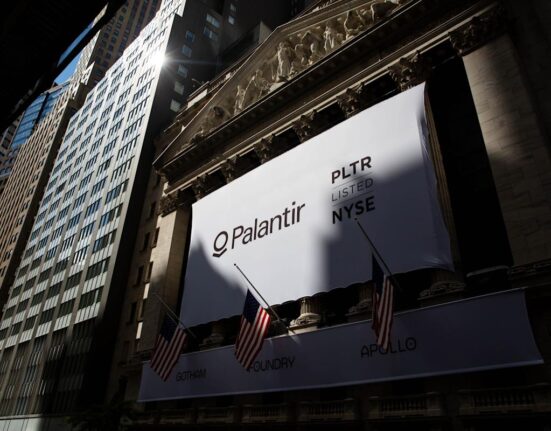By Mike Stone
WASHINGTON (Reuters) -The much-needed modernization of the U.S. Army’s battlefield communications network being undertaken by Anduril, Palantir and others is rife with “fundamental security” problems and vulnerabilities, and should be treated as a “very high risk,” according to a recent internal Army memo.
The two Silicon Valley companies, led by allies of U.S. President Donald Trump, have gained access to the Pentagon’s lucrative flow of contracts on the promise of quickly providing less expensive and more sophisticated weapons than the Pentagon’s longstanding arms providers.
Military drone and software maker Anduril boasted it had a prototype of the NGC2 communications platform working during a battlefield test just eight weeks after winning the contract award. But the September 5 memo provides fodder for critics who argue that Silicon Valley’s move-fast-break-things ethos may not be the best approach for vital military equipment.
The memo from the Army’s chief technology officer about the NGC2 platform that connects soldiers, sensors, vehicles and commanders with real-time data paints a bleak security picture of the initial product.
“We cannot control who sees what, we cannot see what users are doing, and we cannot verify that the software itself is secure,” the memo says.
Those concerns have been addressed already as part of the “normal process” of development, Anduril said. “The recent report reflects an outdated snapshot, not the current state of the program,” the company said in a statement emailed to Reuters.
A Palantir spokesperson said “No vulnerabilities were found in the Palantir platform.”
However the Army internal memo written by Gabriele Chiulli, the Army chief technology officer authorizing official on the NGC2 prototype, said “given the current security posture of the platform and the hosted 3rd party applications the likelihood of an adversary gaining persistent undetectable access to the platform requires the system be treated as very high risk.”
Palantir stock was down more than 7% in afternoon trading on Friday. Anduril is not publicly traded, but company founder Palmer Luckey has said a public offering is planned.
A September 30 article on Anduril’s website touted the NGC2 system’s performance during a live-fire exercise in Fort Carson, Colorado: “Soldiers fired 26 live missions with M777 howitzers on Fort Carson’s live-fire ranges, running AXS side-by-side with legacy crews. The contrast was visible: one team struggling with delays, the other firing digitally in seconds.”
By Mike Stone
WASHINGTON (Reuters) -The much-needed modernization of the U.S. Army’s battlefield communications network being undertaken by Anduril, Palantir and others is rife with “fundamental security” problems and vulnerabilities, and should be treated as a “very high risk,” according to a recent internal Army memo.
The two Silicon Valley companies, led by allies of U.S. President Donald Trump, have gained access to the Pentagon’s lucrative flow of contracts on the promise of quickly providing less expensive and more sophisticated weapons than the Pentagon’s longstanding arms providers.
Military drone and software maker Anduril boasted it had a prototype of the NGC2 communications platform working during a battlefield test just eight weeks after winning the contract award. But the September 5 memo provides fodder for critics who argue that Silicon Valley’s move-fast-break-things ethos may not be the best approach for vital military equipment.
The memo from the Army’s chief technology officer about the NGC2 platform that connects soldiers, sensors, vehicles and commanders with real-time data paints a bleak security picture of the initial product.
“We cannot control who sees what, we cannot see what users are doing, and we cannot verify that the software itself is secure,” the memo says.
Those concerns have been addressed already as part of the “normal process” of development, Anduril said. “The recent report reflects an outdated snapshot, not the current state of the program,” the company said in a statement emailed to Reuters.
A Palantir spokesperson said “No vulnerabilities were found in the Palantir platform.”
However the Army internal memo written by Gabriele Chiulli, the Army chief technology officer authorizing official on the NGC2 prototype, said “given the current security posture of the platform and the hosted 3rd party applications the likelihood of an adversary gaining persistent undetectable access to the platform requires the system be treated as very high risk.”
Palantir stock was down more than 7% in afternoon trading on Friday. Anduril is not publicly traded, but company founder Palmer Luckey has said a public offering is planned.
A September 30 article on Anduril’s website touted the NGC2 system’s performance during a live-fire exercise in Fort Carson, Colorado: “Soldiers fired 26 live missions with M777 howitzers on Fort Carson’s live-fire ranges, running AXS side-by-side with legacy crews. The contrast was visible: one team struggling with delays, the other firing digitally in seconds.”











Leave feedback about this